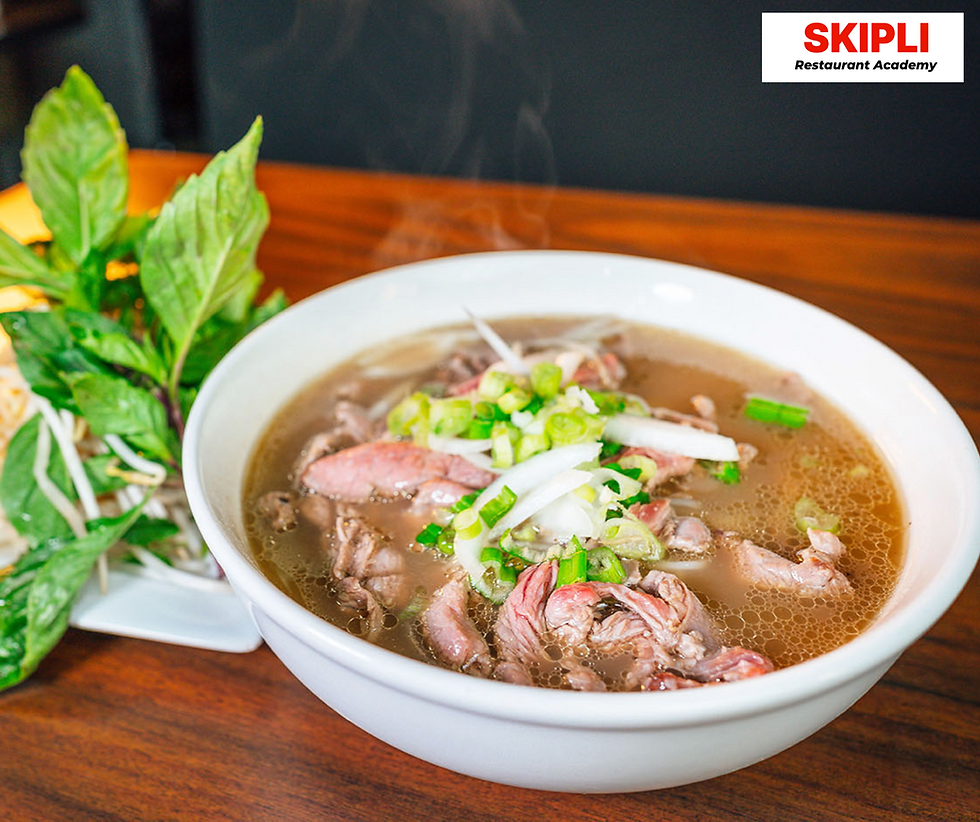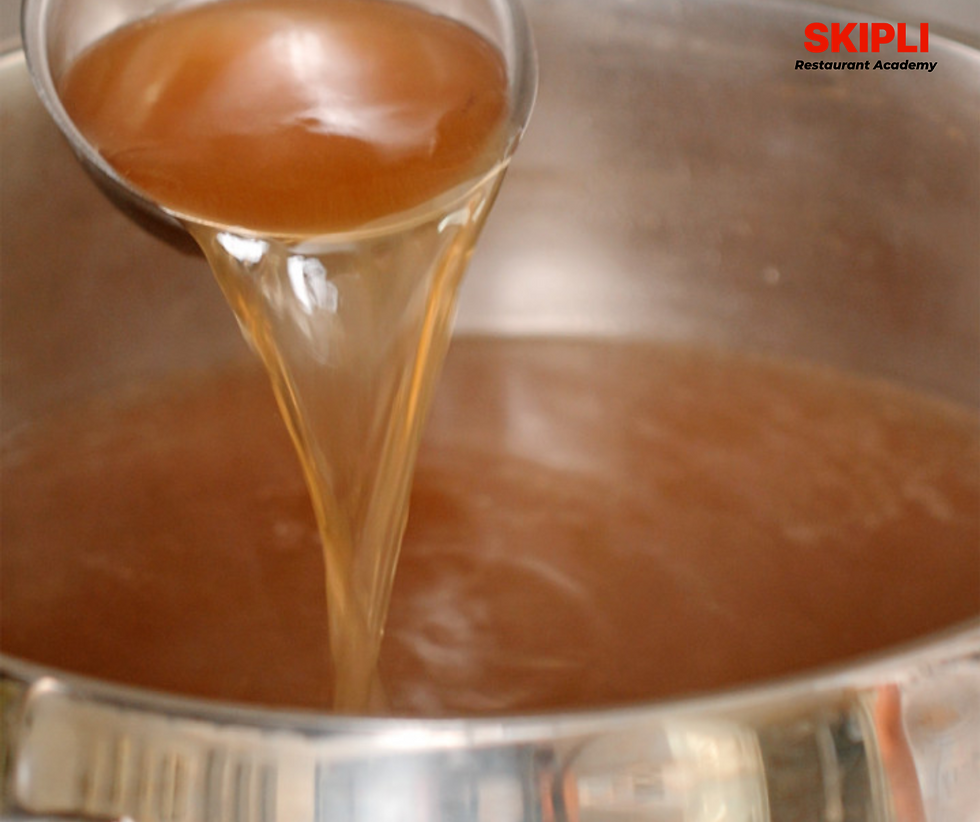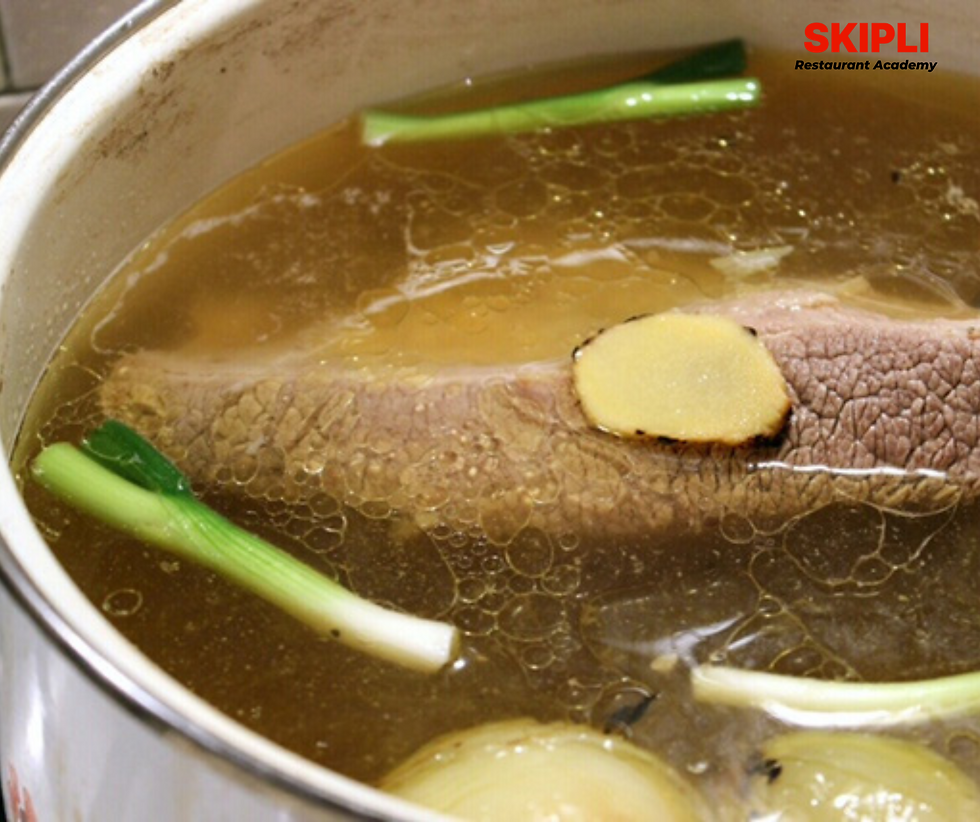Tips for Storing excess Pho broth after making a large batch
- tran nhi
- 26 thg 9, 2023
- 2 phút đọc
When preparing pho broth at home, it's customary to whip up a substantial quantity, not just a single serving. However, this often leads to a common predicament: having more pho broth than you can consume in one go, even when entertaining a sizable gathering of family and friends.

So, what should you do with the surplus broth?
How can you store it effectively?
And what's the best way to reheat it for a delectable encore?
I've compiled some recommendations below, including insights into distinctions between home serving and restaurant practices.

1. Divide and Store:
After finishing your initial pho meal (ideally right after cooking), I recommend dividing the leftover broth into two or more portions: one for the refrigerator or cooler and the other for the freezer. The number of portions depends on your container sizes and available cooler and freezer space.
Note: For homemade meals, you have more flexibility in this regard. In contrast, restaurants and public food establishments in North America must complete the cooling/freezing process within 2-3 hours, and they need to label containers correctly and adhere to FIFO (first in, first out) procedures.

2. Storage Timeliness:
It's crucial to begin the portioning for short-term (cooler) and long-term (freezer) storage within 3-4 hours of finishing the cooking process.
3. Shelf Life:
The cooled portions should be consumed within 6-7 days, while frozen portions can be safely stored for several months or even longer if desired.
Note: For restaurants, I recommend following more stringent processes to maintain quality and meet regulatory standards.
4. Reheating Cooled Broth:
To prepare the cooled broth for a new meal, simply heat it in a pan or pot, bring it to a boil, adjust the taste (by adding water, spices, fish sauce, or other seasonings), and then serve.
5. Reheating Frozen Broth:
If time allows, thaw the frozen broth in the fridge or cooler. This method conserves energy by keeping the cooler cold. Alternatively, you can thaw it on the counter, though this is less safe. If you're in a hurry, there are three common methods: 1) running it under cold water, 2) thawing in the microwave oven, or 3) using warm/hot water. The first two methods are safe for home use, but the third is less so. For restaurant operations, strict adherence to local health regulations is necessary.
6. Avoid Reboiling Excessively:
Never resort to endless reboiling or maintaining high heat on the broth just to avoid storing it in the cooler or freezer. Apart from poor cooking practices, this approach not only fails to meet food safety requirements but also alters the broth's flavor profile, causing a rapid decline in quality.
As mentioned earlier, home-cooked meals offer more flexibility, as you won't have health inspectors knocking on your door or posting food safety grades on your window. By following these steps, you can efficiently manage surplus pho broth and savor the finest homemade pho at your convenience, all while adhering to safe practices.
It's worth emphasizing once more that the rules differ for restaurants. There are compelling reasons why stringent regulations are in place, and pho restaurant operators should maintain high standards in their operations.
For reference, here's a video clip demonstrating the storage of 6 gallons of beef pho broth. While this might be a modest amount for a restaurant, it's more than sufficient for a single homemade pho serving. Proper storage is the key to preserving its quality.

Comments